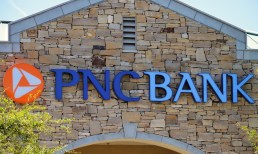The brand will only sell a limited selection of products through Amazon; they will come from a more economy line called J.Crew Mercantile, which encompasses items such as T-shirts and jeans. In all, the products will only comprise approximately 2 percent of J.Crew’s total brand offerings.
Regarding its relationship with Amazon, J.Crew CEO James Brett was quoted in The Wall Street Journal as saying that the brand created a “good understanding” with the online retailer. He noted that some discount imitators “have developed their own lower-priced versions of J.Crew.” By contrast, Brett said, “Amazon wanted to work directly with the people who created the concept.”
J.Crew plans to have Amazon Warehouse create the listings and ship the products – but J.Crew has offered media, such as videos and photos, to help Amazon create the brand page. With J.Crew’s products presented in this way, online shoppers may be able to gain a better feel for the brand than with a more traditional Amazon listing.
At the same time, some are wary of offering products on Amazon, concerned that consumers might not end up visiting a brick-and-mortar store if given the option to purchase a brand’s product online. But working with Amazon does seem to have its perks, which go beyond having an additional sales channel.
Elevating the Customer Experience
Advertisement: Scroll to Continue
Such tie-ups could possibly help big brands take on unauthorized sales by third-party sellers, as Amazon reportedly would monitor those kinds of sales for their partners. In essence, these partnerships have the potential to help “clean up inventory on Amazon.com,” where products can be sold from “countless sellers,” CNBC reported.
To kick off its relationship with Amazon, Nike launched a pilot last summer. In its fourth-quarter earnings conference call in June, a Nike executive made a brief mention of the tie-up: “Our partnership is progressing well,” Nike Chairman, President and CEO Mark Parker said, per a transcript. Parker added that the company is “focused on elevating the consumer experience on the platform,” while “learning a lot.”
Beyond Amazon, Parker noted its partnerships with other eCommerce platforms, such as Tmall, Zalando and Asos. Those sites, along with others he mentioned in the call, play “a critical part of our digital opportunity going forward beyond what we’re doing direct,” Parker said.
The World’s Most Trafficked Mall
J.Crew and Nike aren’t the only brands to work with Amazon: Party City, operator of the soon-to-open Halloween City pop-up stores nationwide, plans to take its fiesta on the digital road and onto the Amazon marketplace. In an investor call explaining the move, Party City CEO James Harrison said, “Amazon really is probably the world’s largest and most trafficked mall.”
But Party City plans to test the waters before diving into the relationship. The retailer will roll out a select line of Halloween costumes as part of its pilot. If that works out, Toy City and the brand’s other associated Christmas and New Year’s product lines could come to the Amazon marketplace toward the end of the year, with perhaps more products next year.
As eMarketer eCommerce and Retail Analyst Andrew Lipsman told Digiday, “Amazon owns the user experience for customers; it’s the first entry point for shopping for a lot of customers, and it’s created a powerful habit.” He added that “it’s no surprise that Party City decided to fish where the fish are.”
Halloween is far and away Party City’s biggest season. Last year, consumers spent over $9 billion on costumes and supplies, such as decorations and candy, up more than 8 percent from a previous record of $8.4 billion in 2016. Harrison said the company wants to ensure that it catches as much of that annual spend as possible.
To achieve that, Party City is focusing on the up-and-coming millennial shoppers, a segment that is increasingly looking for online shopping options. According to the PYMNTS Connected Consumer Playbook, 71 percent of consumers shop online for apparel and accessories. In particular, 25 percent of those between 30 and 40 years of age – who are known as bridge millennials – prefer Amazon for online shopping.
With a little help from Amazon, brands from J.Crew to Party City may be able better reach that segment – or anyone surfing the internet for his or her latest find.




